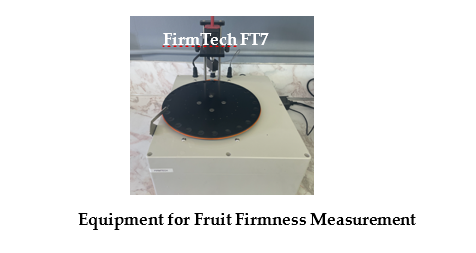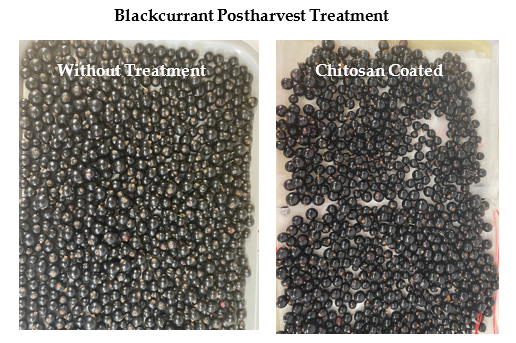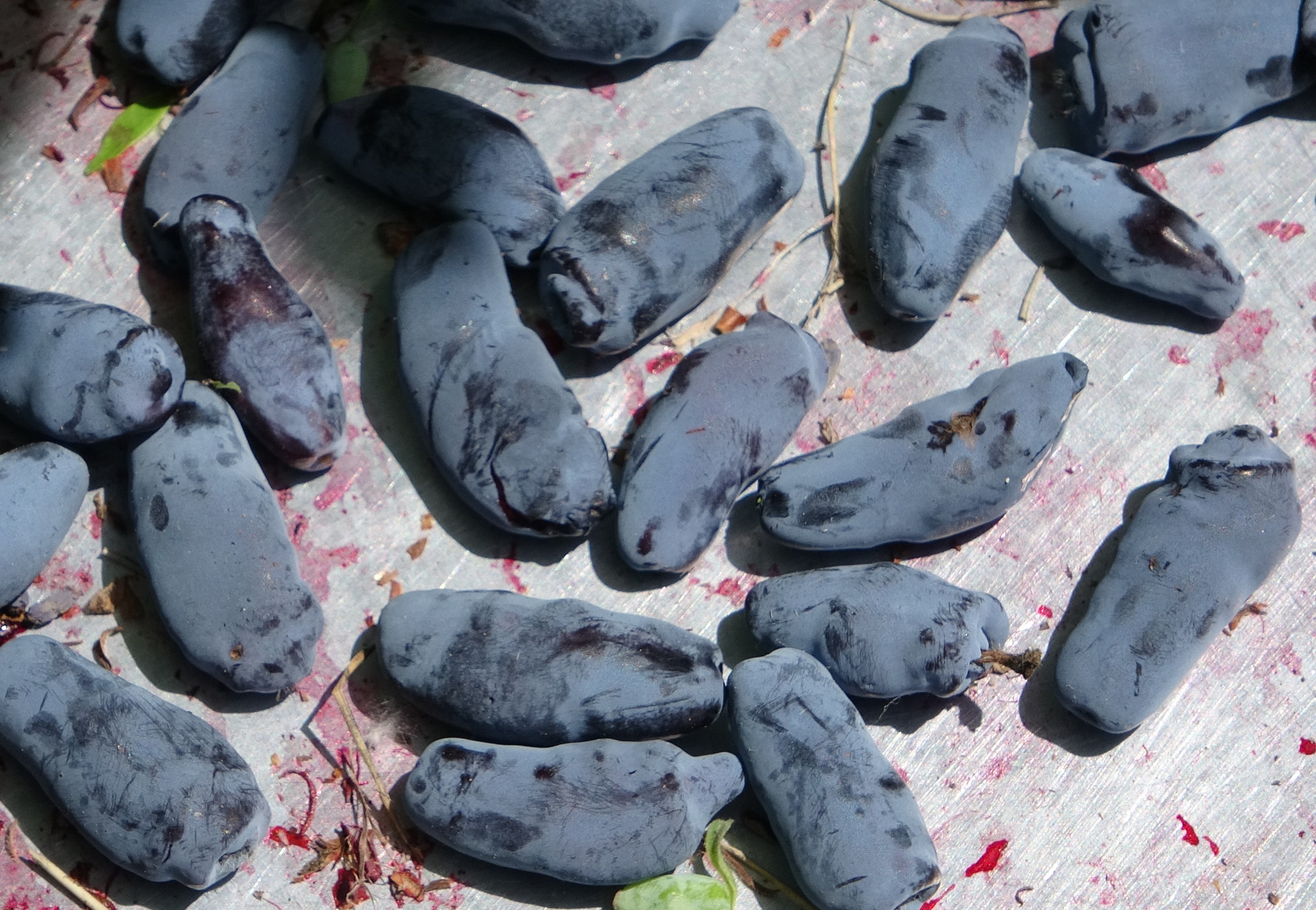Haskap Postharvest Project
Introduction
WARC is actively working on post-harvest processing to improve the health attributes and economic value of small fruits. After harvest, freshly produced fruits need to be handled with care to maintain their quality, nutrition, taste, and freshness. Critical obstacles for small fruit shelf life include short storage life due to declines in berry quality (water loss and firmness) and microbial spoilage (yeast and mold growth). Therefore, identifying means for shelf-life extension is necessary for our fresh cold hardy fruit markets.
The importance of this study:
For several haskap cultivars, shrivel, wrinkling and contraction due to loss of moisture, were observed in our research (Lessio et al., 2021). For dwarf sour cherries, cold storage lasts less than one week before fruit degradation. For these reasons, identifying means for shelf-life extension is necessary for our fresh cold hardy fruit markets.
The criteria we have been using for testing the postharvest strategies are:
- Weight loss.
- Firmness tested by FirmTech FT 7 (UP GmbH, Ibbenbüren, Germany).
- Phytochemical changes: soluble solid content (°Brix), pH and acids.
- Microbial population (mesophilic aerobes & yeast and molds) changes during postharvest.
Microbial populations, including mesophilic aerobes and yeast/ mold population, are indicator microorganisms often used to verify the microbiological quality of small fruits.
- Color changes (CIElab color space).
The color changing is correlated to fruit other quality parameters, such as sugars, acids, titratable acidity, and flavor. Consumer sensory perception is strongly influenced by fruit color.
- Anthocyanins/ Total phenolics/ Flavonoid contents.
Anthocyanins/ Total phenolics/ Flavonoids are bioactive compounds highly related to fruit nutrition and quality.
- Antioxidant properties.
Antioxidant properties provide fruit health beneficial and nutritional information.

The strategies (single or combined) applied for improving our berry quality during postharvest include, but are not limited to:
- LEDs (Light-emitting diodes) light
This is a novel emerging technology to improve small-fruit storage involves supplementation with LEDs (light-emitting diodes) to produce specific wavelengths of light shown to inhibit post-harvest microbes, improve fruit quality, and increase postharvest shelf life.

2. Chitosan coating
Chitosan is a natural biopolymer composed of randomly distributed β-(1→4)-linked D-glucosamine (deacetylated unit) and N-acetyl-D-glucosamine (acetylated unit). It is highly valued by academia and industry in food application due to its special properties, such as biodegradable, non-toxic, biocompatible and film-forming (Y. Chen et al. 2023). As a natural coating material, chitosan biopolymer, through chitin deacetylation, can be used for both preharvest and postharvest applications.

3. Phytohormone treatment
Plant hormones (phytohormones) are chemicals produced by plants that regulate their growth, development, reproduction, and senescence. Phytohormones and their crosstalk regulate fruit ripening and senescence. Multiple phytohormones play crucial roles in fruit ripening. To date, there is a lack of knowledge about the effects of exogenous phytohormones and inhibitors on cold-hardy small fruits during postharvest. Therefore, the current study evaluates the changes in fruit quality after exogenous phytohormones and their inhibitor application.

References
Chen, Yu, Yong Liu, Qingfeng Dong, Changhua Xu, Shanggui Deng, Yongfeng Kang, Min Fan, and Li Li. 2023. “Application of Functionalized Chitosan in Food: A Review.” International Journal of Biological Macromolecules 235 (April): 123716. Doi:10.1016/j.ijbiomac.2023.123716.
Fuentes, Lida, Carlos R. Figueroa, and Monika Valdenegro. 2019. "Recent Advances in Hormonal Regulation and Cross-Talk during Non-Climacteric Fruit Development and Ripening" Horticulturae 5, no. 2: 45. https://doi.org/10.3390/horticulturae5020045.
Leisso, Rachel, Bridgid Jarrett, Rebecca Richter, and Zachariah Miller. 2021. “Fresh haskap berry postharvest quality characteristics and storage life” Canadian Journal of Plant Science 101(6): 1051-1063. https://doi.org/10.1139/cjps-2021-0138.


